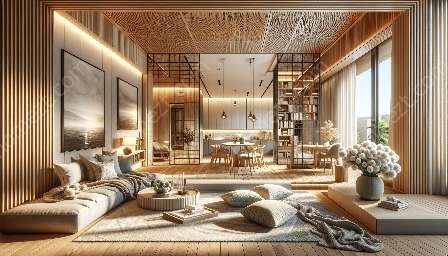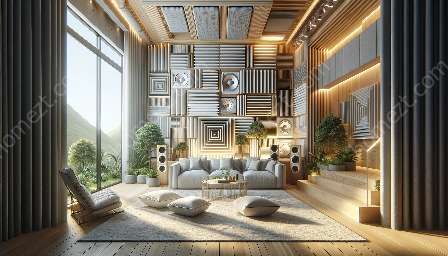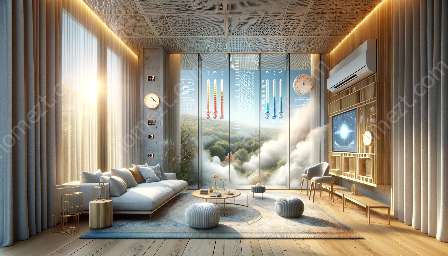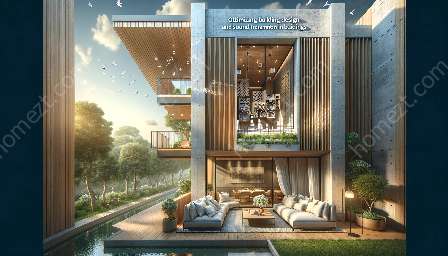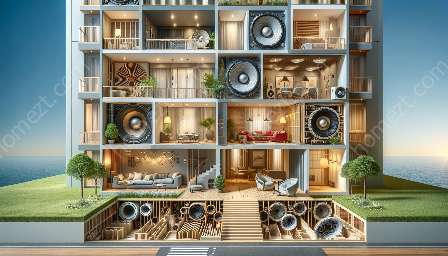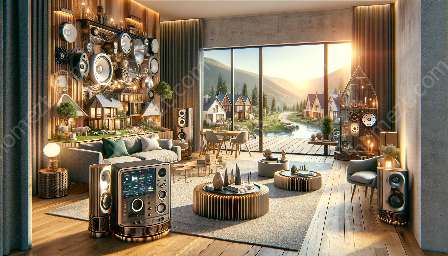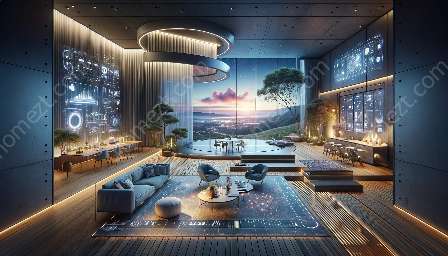Building acoustics and noise control are important factors in creating comfortable and efficient living and working spaces. In this comprehensive guide, we will explore the future trends in building acoustics, sound transmission in buildings, and effective noise control in homes.
Understanding Building Acoustics
Building acoustics refers to the science and engineering of achieving good sound quality within a building and controlling unwanted noise. With the increasing urbanization and densification of urban areas, the demand for better building acoustics has been on the rise. Future trends in building acoustics will focus on creating sound environments that enhance well-being, productivity, and comfort.
Future Trends in Building Acoustics
The future trends in building acoustics encompass various aspects such as:
- Advanced Materials and Technologies: Innovations in acoustic materials and technologies will play a significant role in shaping the future of building acoustics. These advancements will enable the creation of sound-absorbing surfaces, improved sound insulation, and innovative acoustic treatments for various building components.
- Acoustic Design Integration: The integration of acoustics into the overall design and architectural planning of buildings will become increasingly important. Future building projects will prioritize acoustics from the early design stages, leading to more effective and seamless acoustic solutions.
- Smart Acoustic Solutions: The advent of smart building technologies will enable the development of intelligent acoustic solutions. These solutions will leverage sensors, data analytics, and adaptive control systems to dynamically adjust acoustics based on occupancy, usage patterns, and environmental factors.
- Acoustic Health and Well-being: Future building acoustics will not only focus on noise control but also on promoting acoustic health and well-being. This includes creating environments that reduce stress, improve concentration, and enhance overall comfort through optimized acoustics.
Sound Transmission in Buildings
Sound transmission in buildings refers to the transfer of sound from one space to another. Understanding and addressing sound transmission is crucial for ensuring privacy, confidentiality, and comfort within buildings. Future trends in sound transmission will aim to minimize the transfer of unwanted noise while optimizing the transmission of desired sounds.
Future Trends in Sound Transmission
The future trends in sound transmission within buildings will involve:
- Enhanced Building Envelope Design: Innovations in building envelope design will focus on minimizing sound transmission through walls, floors, and ceilings. This can be achieved through the use of specialized materials, construction techniques, and structural arrangements.
- Acoustic Isolation Techniques: Future building designs will incorporate advanced acoustic isolation techniques to prevent sound from traveling between adjacent spaces. This may include the use of resilient mounts, sound-insulating barriers, and strategic building layouts to reduce direct sound transmission paths.
- Customized Soundscaping: Tailoring soundscapes within buildings to optimize the transmission of specific sounds will be a key trend. This may involve the use of acoustic diffusers, reflectors, and absorbers to control the propagation of sound waves for different purposes and environments.
Noise Control in Homes
Noise control in homes is essential for creating a peaceful and comfortable living environment. As urbanization continues to increase, the need for effective noise control solutions within residential spaces becomes paramount. The future of noise control in homes will revolve around innovative technologies and design strategies that prioritize tranquility and well-being.
Future of Noise Control in Homes
The future of noise control in homes will encompass:
- Integrated Building Systems: Homes of the future will feature integrated noise control systems that blend seamlessly with the overall building infrastructure. This may include the incorporation of sound-dampening materials, intelligent HVAC systems with noise-reducing capabilities, and noise-sensitive design considerations.
- Personalized Noise Management: Advanced noise control technologies will enable personalized noise management solutions within homes. Residents will have the ability to customize their environment's soundscapes based on individual preferences, activities, and specific noise sources.
- Wellness-Focused Design: Future homes will prioritize wellness-focused design elements, including acoustically optimized room layouts, sound-reducing architectural features, and considerations for indoor-outdoor noise interactions to promote a holistic living experience.
- Adaptive Noise Control: The adoption of adaptive noise control mechanisms will allow homes to dynamically adjust noise levels based on real-time environmental conditions, occupant activities, and external disturbances.
Conclusion
The future trends in building acoustics and noise control are poised to revolutionize the way we design, construct, and inhabit buildings and homes. By embracing advancements in materials, technologies, and design philosophies, we can create acoustically superior environments that prioritize well-being, comfort, and tranquility.

